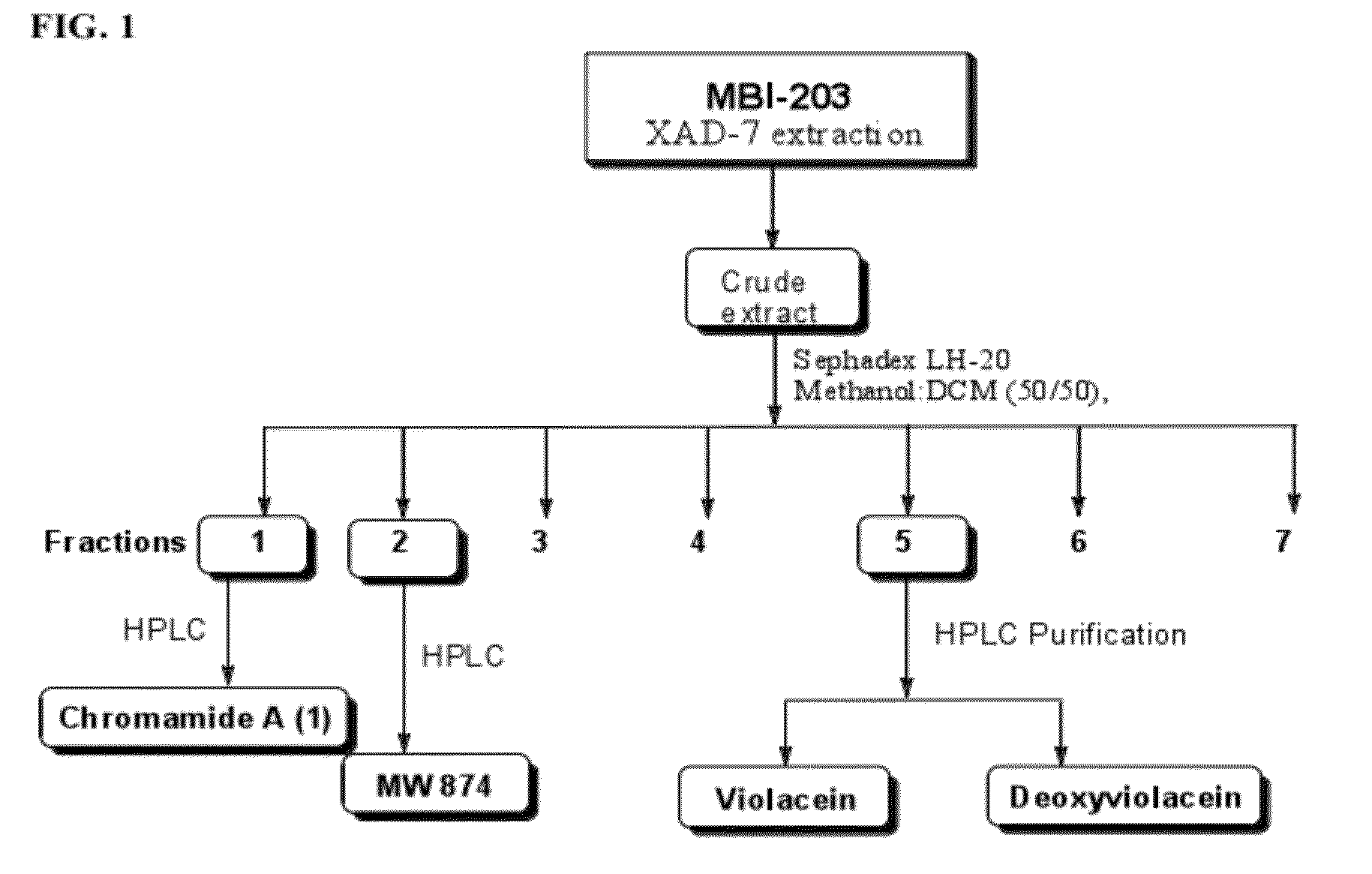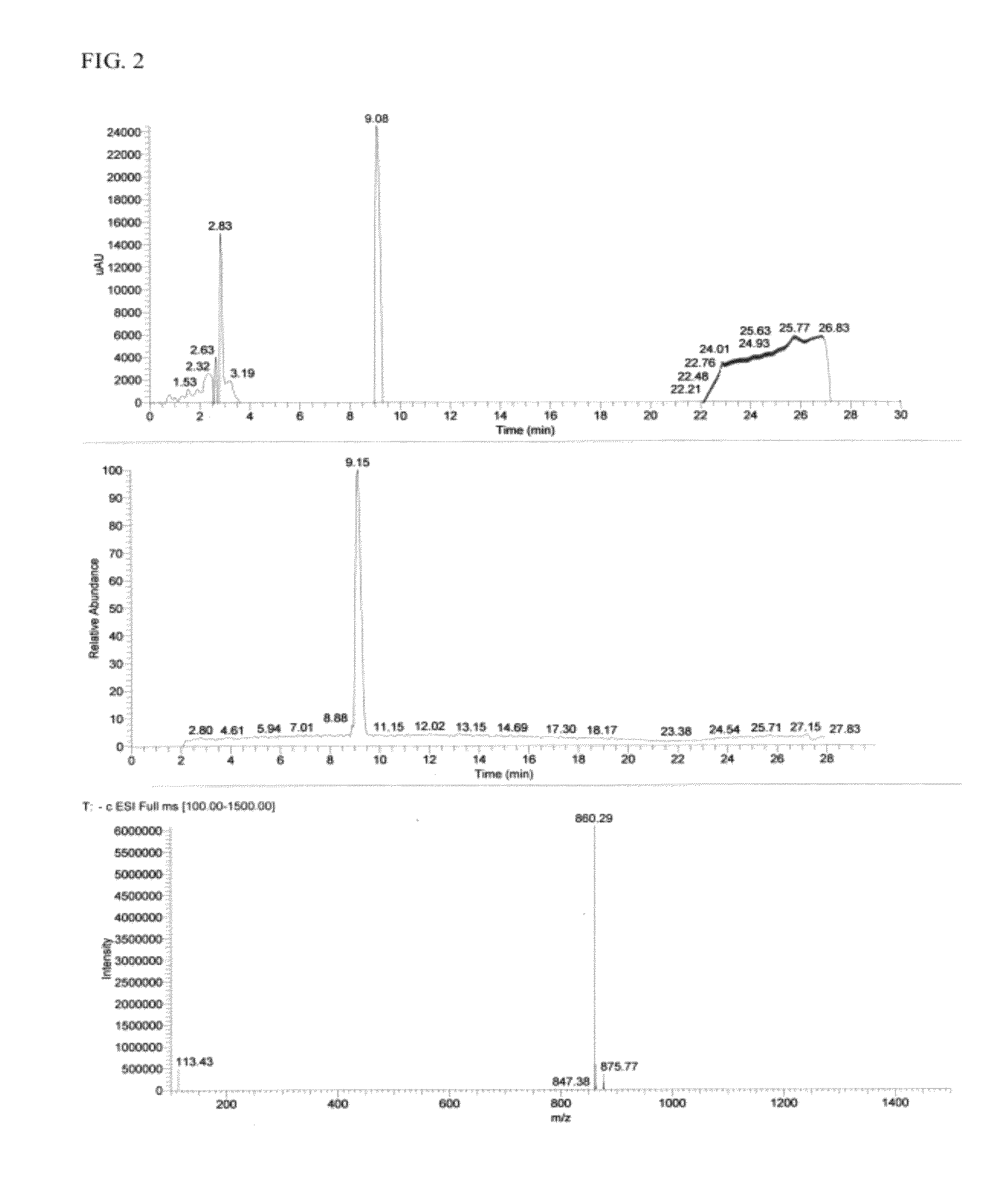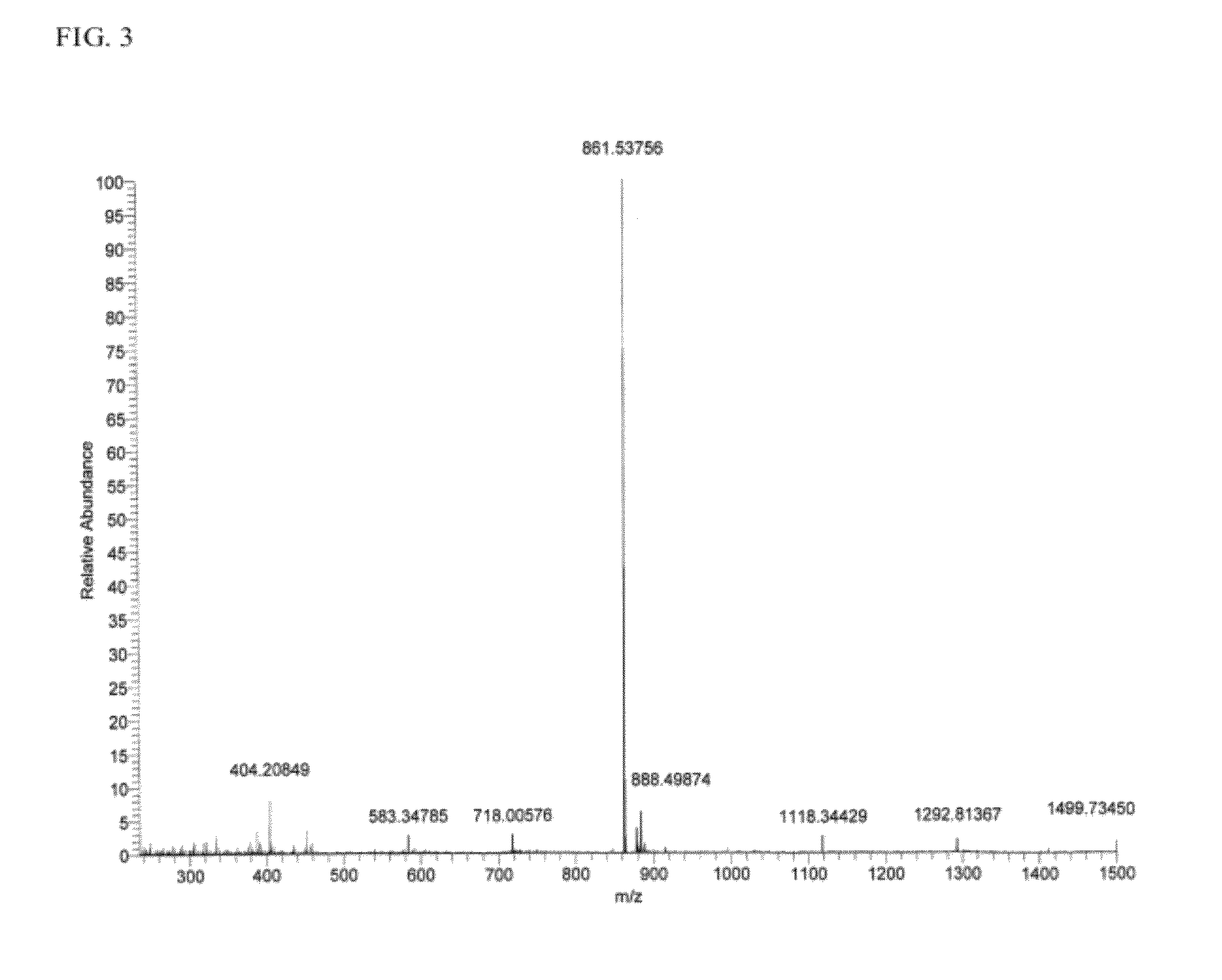Chromobacterium bioactive compositions and metabolites
a technology of chromobacterium and bioactive compositions, applied in the field of chromobacterium substugae, can solve the problems of difficult delivery of chemical nematicides, not all interactions have yet been studied, and the development of chemical control for plant-parasitic nematodes is challenging
- Summary
- Abstract
- Description
- Claims
- Application Information
AI Technical Summary
Problems solved by technology
Method used
Image
Examples
example 1
Extraction of Compounds from Chromobacterium Substugae
[0098]The following procedure is used for the purification of compounds extracted from the culture of Chromobacterium substugae:
[0099]The culture broth derived from the 10-L fermentation C. substugae in L-broth is extracted with Amberlite XAD-7 resin (Asolkar et al., 2006) by shaking the cell suspension with resin at 225 rpm for two hours at room temperature. The resin and cell mass are collected by filtration through cheesecloth and washed with DI water to remove salts. The resin, cell mass, and cheesecloth are then soaked for 2 h in acetone / methanol (50 / 50) after which the acetone / methanol is filtered and dried under vacuum using rotary evaporator to give the crude extract. The crude extract is then fractionated by using Sephadex LH 20 size exclusion chromatography (CH2Cl2 / CH3OH; 50 / 50) to give 7 fractions (FIG. 1). These fractions are then concentrated to dryness using rotary evaporator and the resulting dry residues are scr...
example 2
Amino Acids Analysis of Chromamide A
[0112]Chromamide A (0.05 mg) was hydrolyzed by using liquid phase hydrolysis (6N HCL, 1% Phenol, 110° C., 24 hr., in vacuum). After cooling, the reaction mixture was dried and the hydrolyzed product was dissolved in Norleu dilution buffer to 1.0 mL volume. A 50 μl of the sample was loaded onto the ion-exchange column for analysis.
[0113]For standards and calibration, an amino acid standards solution for protein hydrolysate on the Na-based Hitachi 8800 (Sigma, A-9906) is used to determine response factors, and thus calibrate the Hitachi 8800 analyzer for all of the amino acids. Each injection contains NorLeucine as an internal standard to allow correction of the results for variations in sample volume and chromatography variables. System utilizes Pickering Na buffers, Pierce Sequanal grade HCl (hydrolysis), a Transgenomic Ion-Exchange column and an optimized method developed by Molecular Structure Facility (MSF), UC Davis, and the individual amino a...
example 3
Confirmation of Toxicity on Cabbage Looper (Trichoplusia ni)
[0114]Toxicity of the compound of interest in fraction 1 (F1) was confirmed in an in vitro assay using 1st instar cabbage looper larvae as a test object.
[0115]Two hundred microliters of commercial cabbage looper diet was distributed in each well of a 96-well microplate. After the diet had solidified, 100 uL of solution containing 50 uL of extract (corresponding to four individual peaks found in fraction 1; H1-H4), 350 uL EtOH and 600 uL sterile DI water was pipetted in each well, after which the plate was dried using a hand-held fan. The amount of extract in each well was 10 micrograms. Each treatment was replicated eight times, and a mixture of pure ethanol and water was used as a negative control.
[0116]One test insect (1st instar larvae of cabbage looper) was placed in each well, and the plate was covered with an adhesive seal. The seal was punctured for aeration, and the sealed plate was incubated at 26° C. for four days...
PUM
| Property | Measurement | Unit |
|---|---|---|
| flow rate | aaaaa | aaaaa |
| retention time | aaaaa | aaaaa |
| retention time | aaaaa | aaaaa |
Abstract
Description
Claims
Application Information
 Login to View More
Login to View More - R&D
- Intellectual Property
- Life Sciences
- Materials
- Tech Scout
- Unparalleled Data Quality
- Higher Quality Content
- 60% Fewer Hallucinations
Browse by: Latest US Patents, China's latest patents, Technical Efficacy Thesaurus, Application Domain, Technology Topic, Popular Technical Reports.
© 2025 PatSnap. All rights reserved.Legal|Privacy policy|Modern Slavery Act Transparency Statement|Sitemap|About US| Contact US: help@patsnap.com



